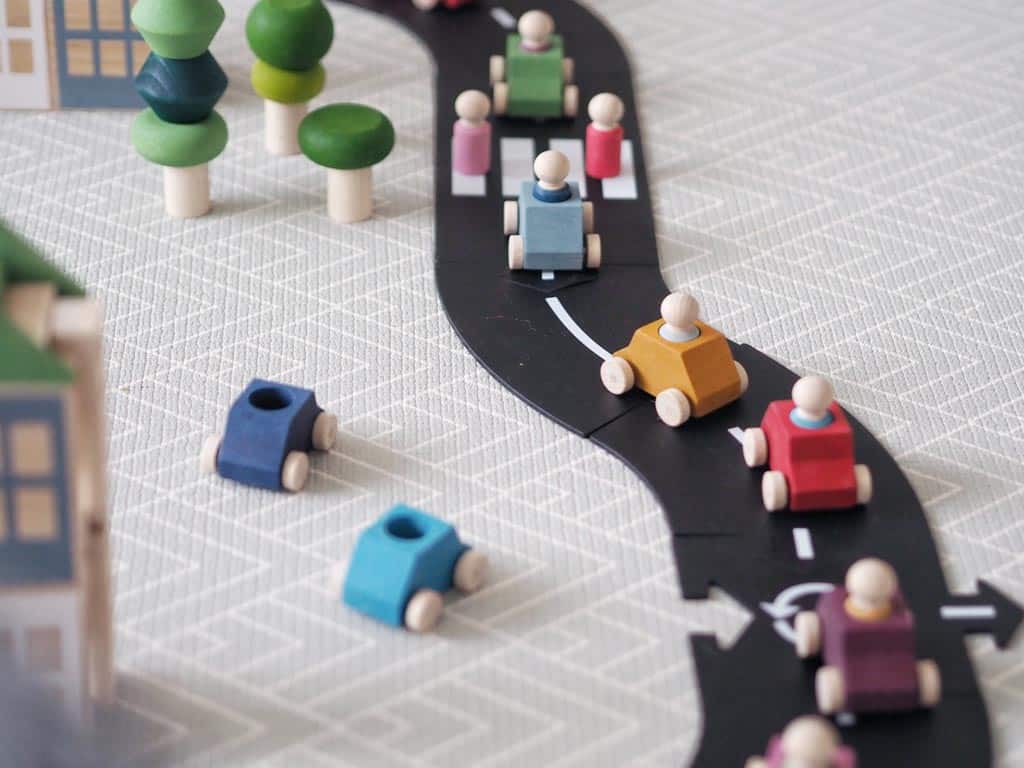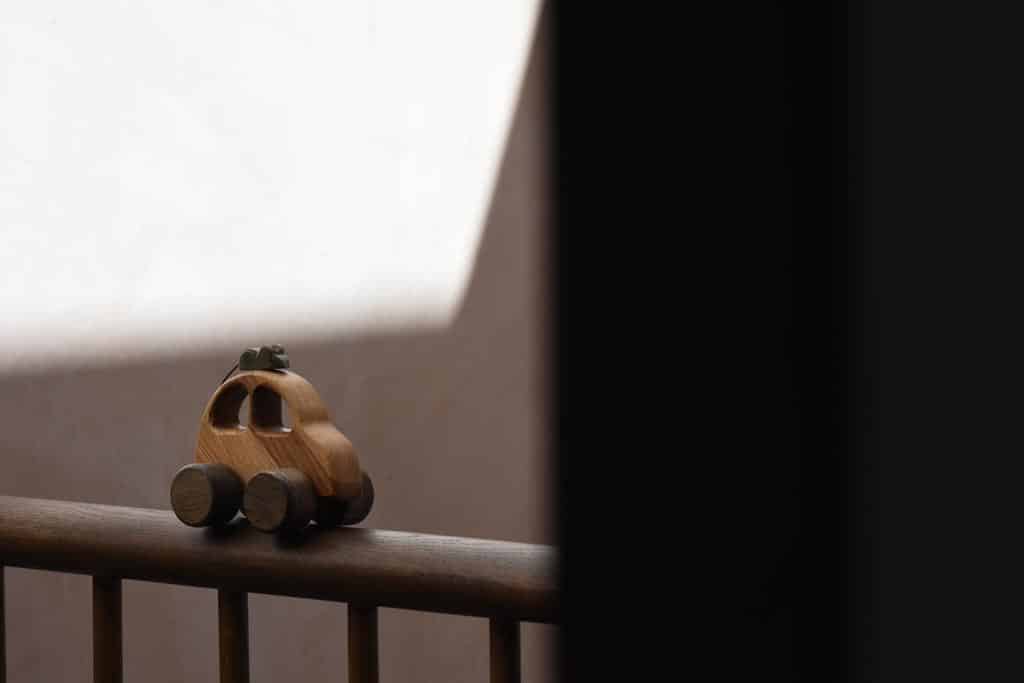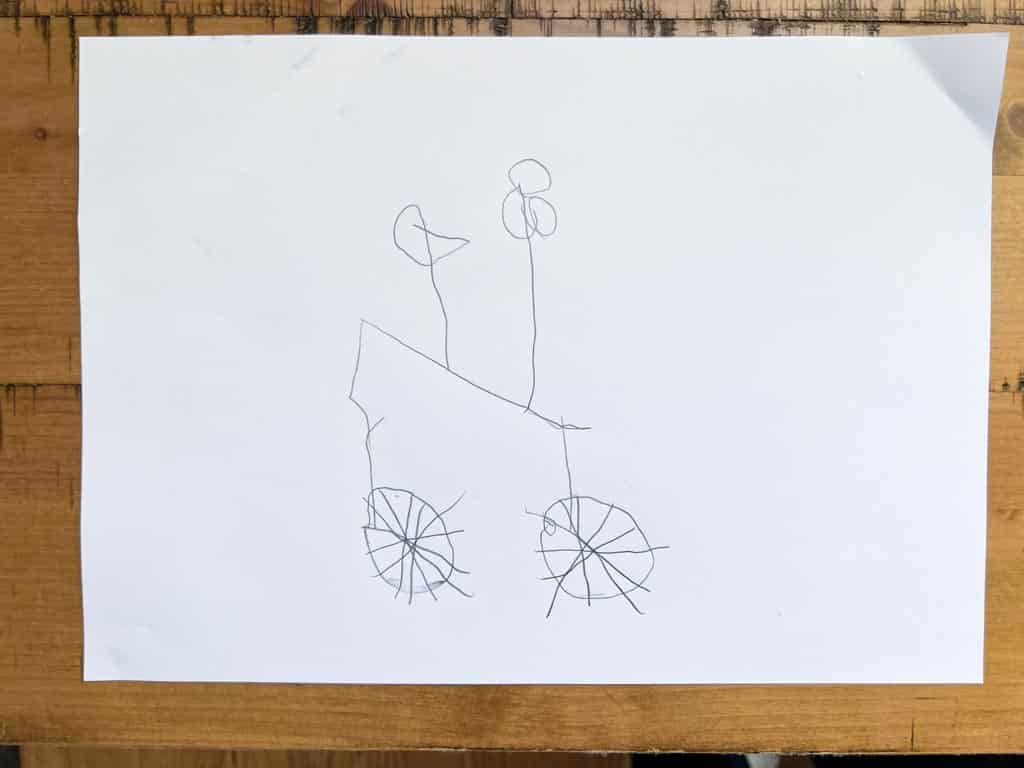Here is a boy.
He is rolling a ball along a track and it is fun.
Down, down, it rolls, snaking left and right until it reaches the bottom.
But the game doesn’t stop there.
Back to the start it goes and the ball sets off again.
How many times does he do this? He has lost count. He doesn’t care. The activity is engrossing and time stands still.
The boy is exploring the trajectory schema, a play schema that for some children can become an obsession.

What is a schema?
A schema is a mental model that we have of how something works. Schemas help us to guess what will happen next without having to work things out from scratch every time.
The trajectory schema is a mental representation of how things move.
A ball, a dart, a plane and a running child all have trajectories. They start at A and end up at B.
But how do they get there? Do they go straight? Do they arc? Do they drop? This is the stuff of the trajectory schema. Tennis balls, ping pong balls and shuttlecocks all loop over nets but do so in their own idiosyncratic ways. Through repeated practice, children learn that light balls don’t travel as far as heavy ones and fall more slowly (unless you find yourself in a vacuum – or outer space).
This is why children of a certain age (toddlers, mostly) repeat actions so often – they are testing out their schemas, their mental model of how things work. Get the answer you expected and you stop, satisfied. Get something unexepcted and you must test and test again until you uncover a new rule.

Activities for exploring the trajectory schema
Children exploring the trajectory schema often enjoy activities that involve movement, paths, and trajectories. Here are some activities that can engage and support their exploration:
- Throwing and catching. Try beanbags, balls, or soft toys. Vary the angle and distance. Throw up to a basketball hoop or down the stairs to the floor below. How must you adjust your throw?
- Rolling. Roll objects down ramps, slopes, or tracks. Explore how the angle and speed of the roll affect the distance and path of the objects. Try balls, cars, cardboard tubes, wooden blocks and even liquids.
- Obstacle courses. Remember the obstacle course on Sports Day at school? Run to the cone, pick up a bean bag, throw it in the bucket, run to the next cone, pick up a hoop and hook it over a post. Phew! What fun! And trajectory schema heaven.
- Bubbles: Blow bubbles, marvel, chase and pop!
- Art with lines. It’s not only toy cars and running children that have trajectories – lines do too. Offer art materials like crayons, markers, or paintbrushes and let your child doodle. Better yet, get some playground chalk and draw a route around the garden or use masking tape to mark a path through your home.
- Miniature golf. Set up a mini golf course using household objects. Children can use putters or makeshift golf clubs to hit balls along designated paths, experimenting with different forces and angles to achieve desired trajectories.
- Sycamore seeds. Throw them up in the air and watch their mesmerising descent. You can also make DIY paper helicopters that work in very much the same way. All you need is a paper clip, a sheet of paper and some scissors.
- Paper aeroplanes: The folding is tough – and a great fine motor workout for older preschoolers – but there is so much scientific and engineering knowledge to pick up along the way that this activity is well worth the trouble. For added fun, decorate your plane with trajectory-friendly lines.
- Water Play with Cups and Funnels. Provide cups, funnels, and containers to pour and transfer water. See this post on Water play with drainpipes and guttering for longer, more exciting trajectories.
- DIY marble runs. Tape + cardboard tubes + marbles = FUN!

Trajectory schema toys
When you think about the toys that children often become obsessed with, like wooden railways, cars and balls, what do you notice? They are often focused on trajectory. Here are a few to consider for your toy box:
- Balls: Footballs, golf balls, rugby balls, ping pong balls
- Cars and vehicles: Cars to push but also pull-along vehicles to guide with string. Trucks that carry loads and vehicles that take passengers are also great for exploring the transporting schema.
- Ramps: It’s more fun to explore trajectory when you have a ramp! Use a book, a ruler, a plank or a piece of cardboard.
- Frisbees. Hard to throw when you’re a preschooler but don’t give up – the rewards are worth it. It’s a completely different way to fly.
- Kites: Another tricky one for a preschooler but great fun if co-piloted by an adult. And there’s the thrill of trying to hold in high winds . Don’t let go!
- Parachute toys. Stand at the top of the stairs – or on the kitchen table – and let go. Your paratrooper will
- Streamers. Twirl scarves and streamers – or glow-in-the-dark sticks or sparklers – and trace a shape in the air.
- Water pistols: Reach for the sky!
Final word
You don’t have to spend long looking at the list of activities to understand that your child’s mental representation of the trajectory schema is rich and wide-ranging. It’s not simply about getting from A to B – it’s how you get there. And in that there’s almost infinite variety.
All that repetitive play doesn’t seem so pointless now. There’s a lot to learn!




